With their cute and cuddly appearance, most people prefer rabbits as pets. However, every variety is unique in physique, temperament, and diet.
One of the most interesting rabbits is the continental giant rabbit. Is it a suitable breed for you? Read more to know their background, behavior, and health concerns!
Breed Information
Size | Giant |
Weight | 12 to 30 pounds |
Life Span | 4 to 7 years |
Color | black, yellow, opal, agouti, red agouti, and light or dark steel |
Rarity | Common but relatively rare in some areas like Canada |
Similar Breeds | Flemish Giant, Belgian Giant, Giant Angora, Checkered Giant |
Best Suited For | Experienced rabbit owner with large space to accommodate the giant rabbit |
A Little Bit of Background and History
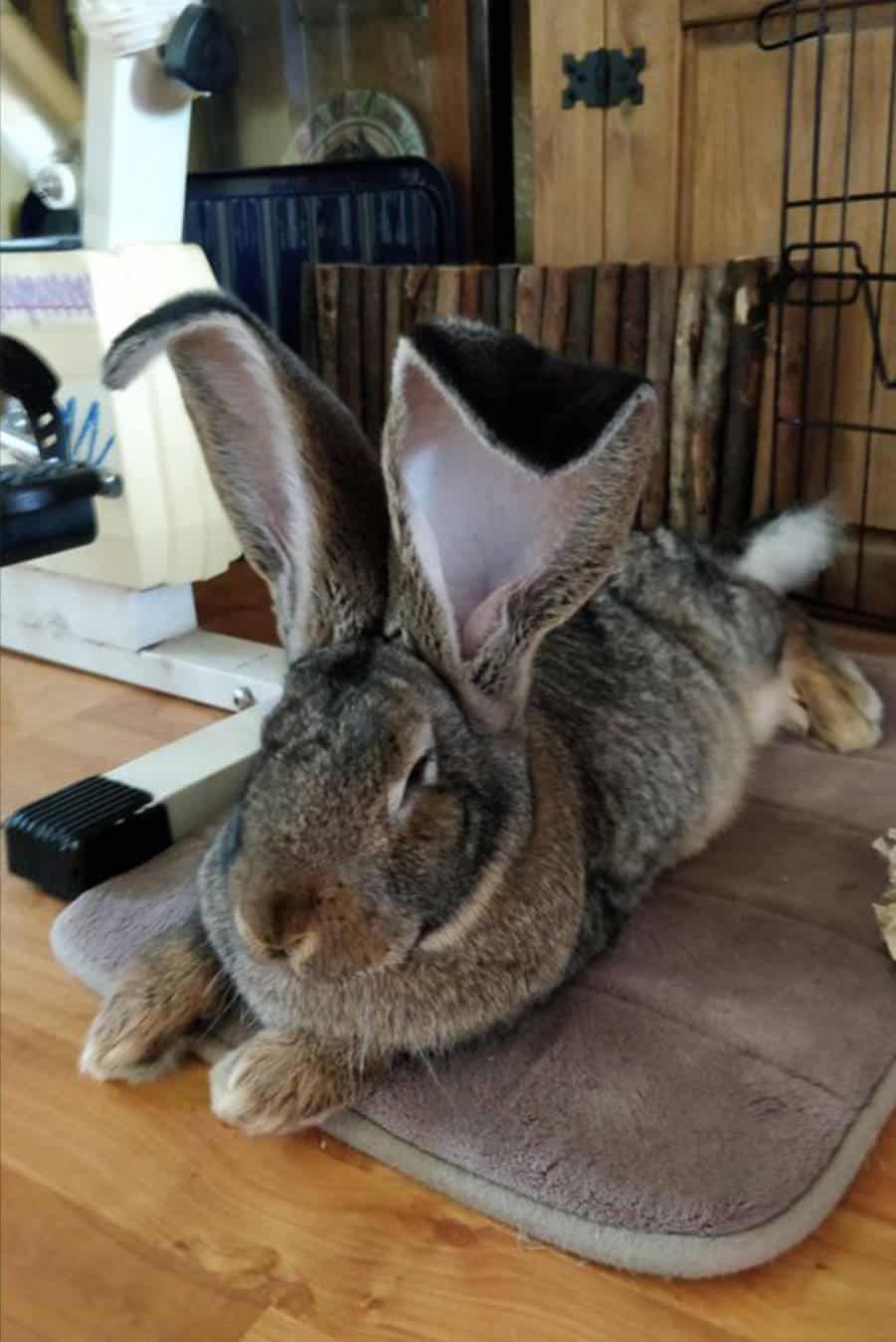
Bred for their meat, Continental Giants had been discovered in the 16th century. These massive rabbits are descendants of Flemish Giant rabbits and Wild European hares. Some concluded that these giants came from Belgium. They are also called German Giants.
These rabbits were first officially documented in 1893. During the 1900s, they became more prevalent in public. It was after they were presented during the British Rabbit Competition. These rabbits are nicknamed Contis by their rabbit owners.
Contis were brought to America in the early 1900s. Today, they are still not recognized by the American Rabbit Breeders Association (ARBA). These giants were imported for mix-breeding them with Flemish Giants.
In 2006, they became popular in America after performing in rabbit circuses. Public media also featured them. But in 2015, fewer people in the continent were interested in taking care of Contis.
The British Rabbit Council (BRC) recognizes the White Continental and the Colored Continental. A BRC ring is also given to rabbits as marks of original ownership. They are metal bands wrapped around the legs of the rabbits. When your Conti has this ring, it can join rabbit shows.
Engraved in the ring is the birth date of the rabbit and the breeder. Take note that this ring doesn’t determine the quality of the rabbits.
It only serves as the identification of your rabbit. It is equivalent to the ARBA’s tattoo to the rabbits’ ears where the pedigrees of the rabbits are written.
In 2010, the Guinness World Record awarded the title of “largest rabbit in the world” to a Conti. Darius is 4 feet and 4 inches long and weighs more than 50 pounds.
Unfortunately, this prize-winning bunny had been stolen. It was taken while in its enclosure in Stoulton, Worcestershire.
Appearance of Continental Giant Rabbits
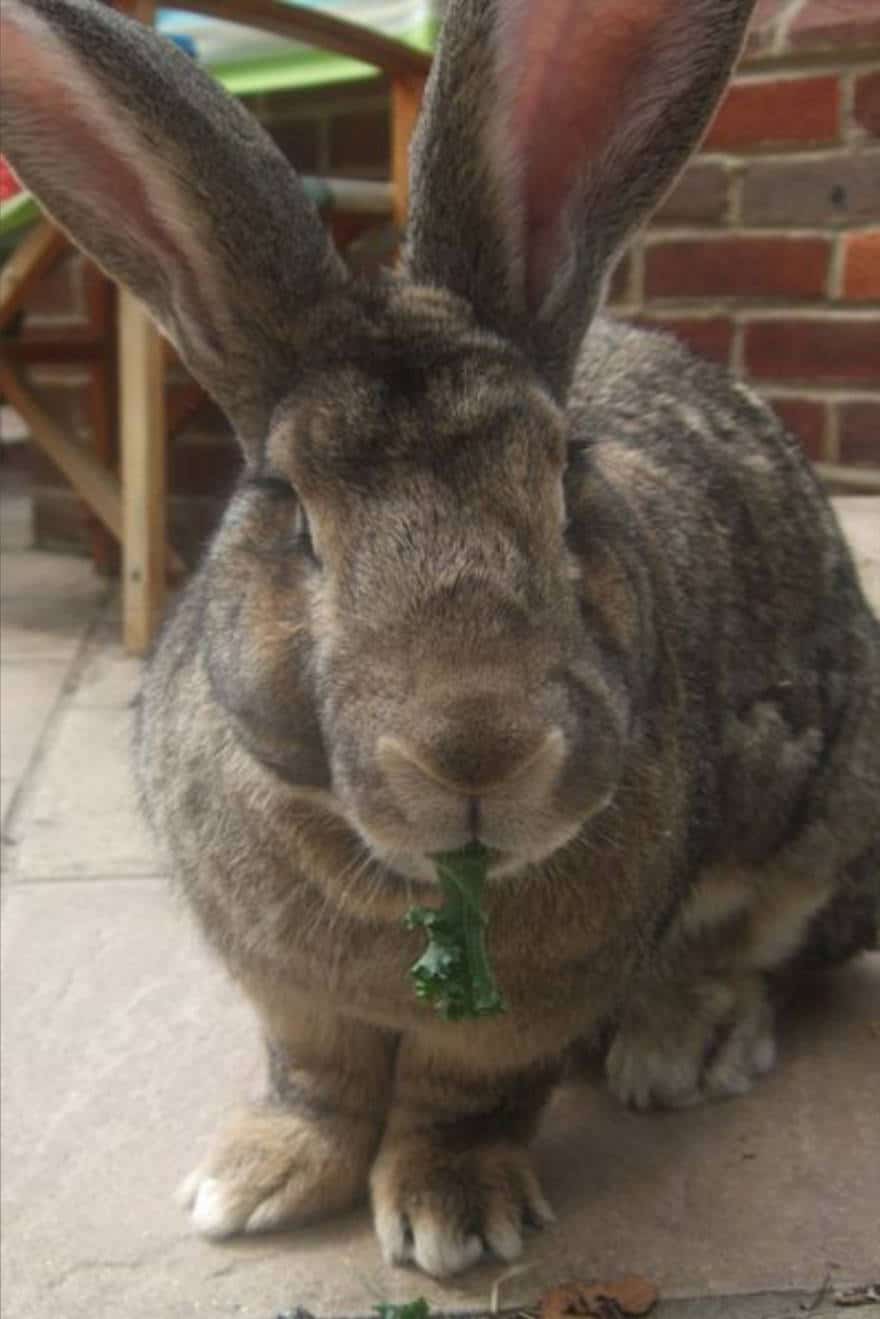
Because of their solid backs and hard-muscled hindquarters, Contis gives a strong impression. Their semi-arched body extends from their shoulder to their tail. They can grow up to two feet or more. The average weight of these gentle giants is about 16 to 30 pounds.
Well-proportioned, straight legs support their bodies. Like other rabbits, they are also covered with dense coats and tender undercoats.
Their hairs are 0.4 to 1.4 inches long, so grooming them regularly is essential. Colored giants have a variety of colors like black, yellow, opal, agouti, red agouti, and light or dark steel.
In terms of their appearance, Contis have large heads. They also have long ears that are 25% of their body or, to estimate 6 to 8 inches long! Their eyes are always alert and bright, making them look more endearing. White Continental Giants can have pink or blue eyes.
The average lifespan of European rabbits reaches up to 9 years. Unfortunately, Contis can only last for up to 4 to 6 years. They are already lucky if they reach seven years.
Because of their size, Contis suffer from more diseases compared to smaller ones. They quickly experience overheating. Obesity is also common if their water and food are not appropriately supervised.
Personality, Behavior and Temperament
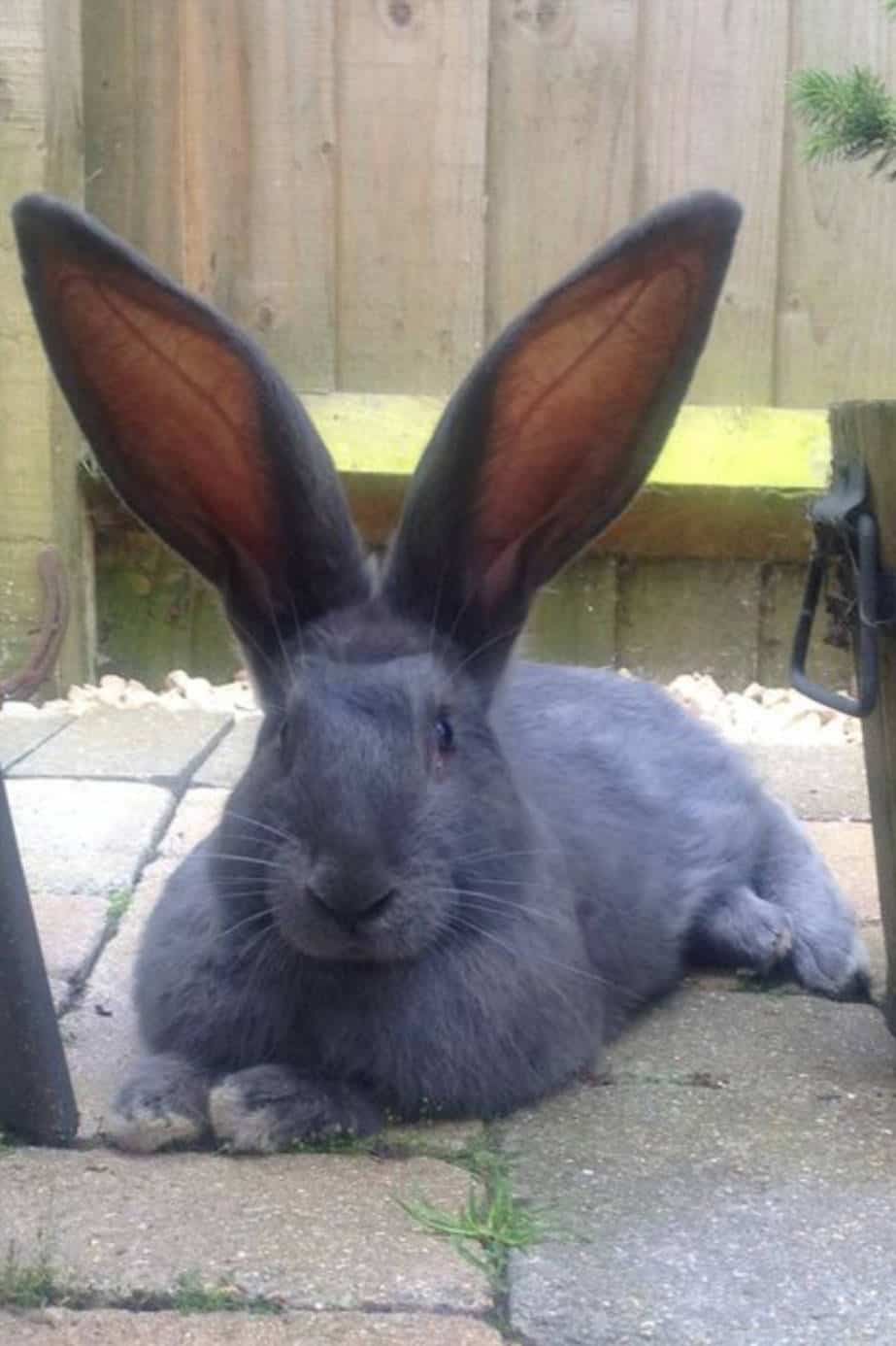
Contis are docile, friendly, and calm pets despite their giant sizes. Rabbit owners love them because these furry pets long to be touched and cared for.
But if it is your first time to meet them, you must get their trust first. They won’t get near you if they don’t know you. Holding them gently while they are young is crucial to build a friendship with them.
Aside from being affectionate, Contis are also intelligent. They love to be trained and learn new tricks. You can teach them how to use their litter box.
These rabbits are so clever that they recognize their names. You can also try to make them understand what “no” means. If you have time, you can also conduct leash training with them.
Contis also tend to be playful. They like to be the center of attraction, hopping and roaming around. Hence, you must have ample space where they can play and move.
These rabbits are also good companions. Some rabbit owners reported that there are times that Contis act like dogs than bunnies.
If you have children, they can get along with these rabbits very well. When Contis are very comfortable, they sit on their owners’ laps.
However, if your kids are inexperienced in holding rabbits, teach them the proper way. But if they are too young to learn, don’t let them pick and hold these rabbits. Contis have fragile body structures.
As they grow bigger, you must be more careful in carrying a Conti because you may injure its spine. If they feel pain or fear, they will kick out to be set free.
Don’t try to soothe them anymore. Instead, let them go. These giants also love to chew, so keep them away from wires and cables.
Common Health Problems
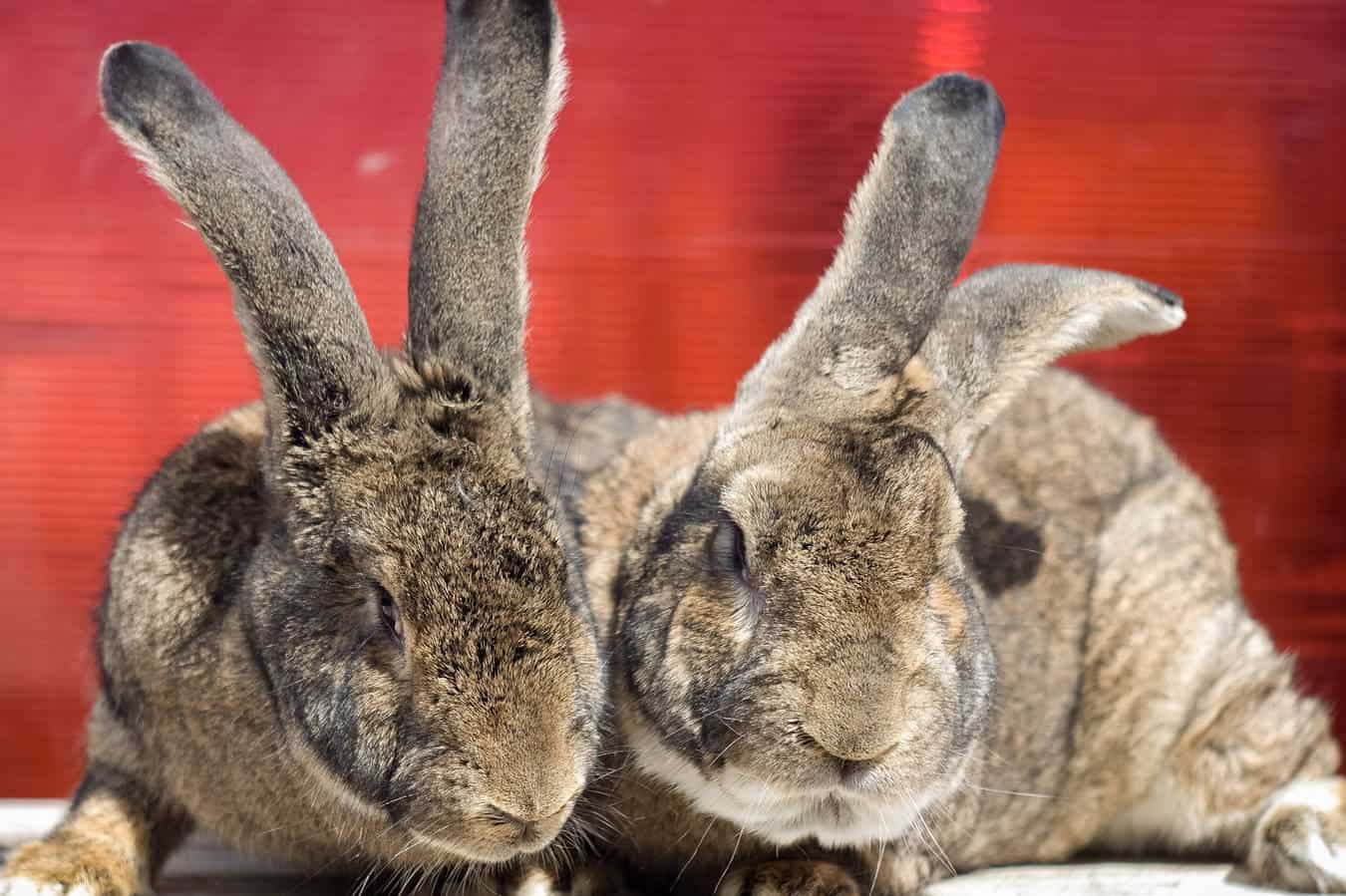
Arthritis
Giant rabbits like Contis develop arthritis in earlier years than smaller rabbits. Because of their weight, their joints wear and tear quickly. Although it is a severe disease, rabbits try to act as normal as possible.
Some of the symptoms you must watch for are stiffness in movement and reduced appetite. You may also notice that your rabbit has difficulty jumping and cannot get out of its litter. Because of pain, rabbits become more grumpy and aggressive.
Condition like arthritis is incurable. However, you can provide comfort to your pet by helping it lose weight if it’s overweight. Also, provide a comfortable sleeping area and keep it warm. Keep its back end clean by brushing it regularly.
Flystrike
Flystrike, a common disease for giant rabbits, is a fatal condition that you must watch for. Flies love to lay their eggs in damp and warm places, especially injured and dirty animals. Since flies are attracted to the rabbits’ scent glands, they are the common victims.
In a matter of hours, the eggs will hatch and turn into maggots. These maggots will feed on the rabbits’ flesh. The maggots’ infestation is so rapid that rabbits can lose large parts of their body. They may die from infection or toxic shock.
If you notice the maggots in your rabbit, go to the vet immediately. Treatment includes the removal of the maggots and cleaning of the infested area. Topical products and antibiotics will also be given to your pet. To prevent flystrike, always keep your Conti clean and dry.
Pododermatitis
Giant breeds like Contis are susceptible to experiencing pododermatitis. It is also known as sore hocks or bumblefoot.
This condition happens when there is trauma on the skin of the sole because of bearing the rabbit’s body weight. A skin infection follows, making the sore worse.
When you observe that your Conti is tiptoeing when walking, go to the vet for treatment. Clean your rabbit’s cage and provide more comfortable flooring like a solid board or mat.
Caring for Continental Giant Rabbits
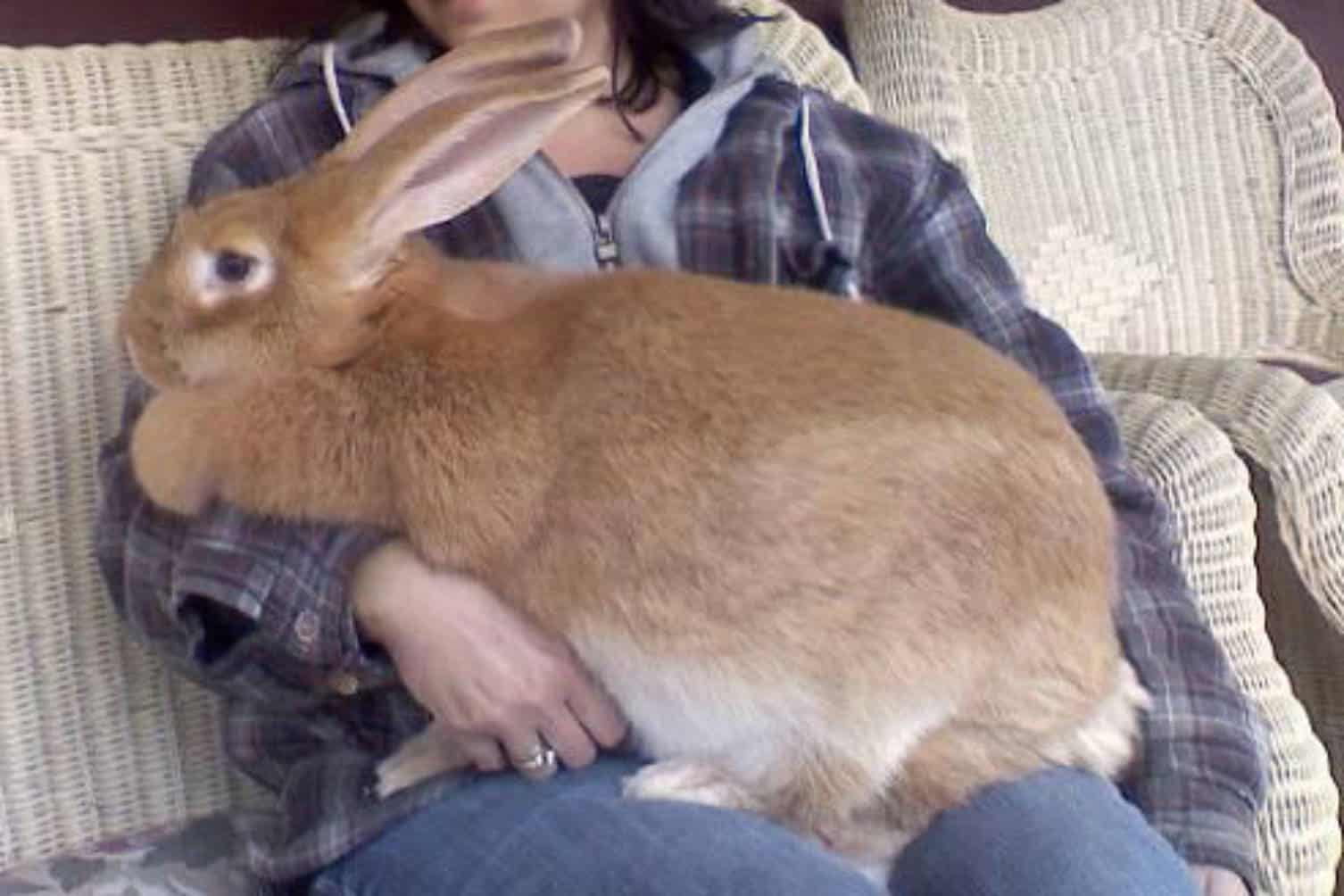
Housing
A spacious shelter is essential for Contis。 Their cage must be at least 12 to 20 feet square so they can roam and move around. They need to exercise for at least two hours a day.
Also, it must be high enough so that they won’t bump their heads when they stand up. Make sure that their homes are secured from predators and other outside elements.
If you want to keep them inside your home, make your house rabbit-proof. Hide all the wires and cables with protective coverings to prevent them from chewing.
In addition to that, place them in the quietest part of your house. Don’t forget to provide it with litter if you don’t want the inside of your home to be stinky and messy.
Nutrition and Diet
With their huge feature, it is easy to assume that it’s fine to feed anything to Contis in any amount. Same with other rabbits, these gentle giants have sensitive digestive systems. Also, giving too much food can make them overweight which is not beneficial to their health.
Give the right portion of food to your Conti. Rabbits’ diet consists mainly of hay. The best hay to give is Timothy hay. You can also provide them with alfalfa but only in a short span.
This hay has a high concentration of calcium that can lead to kidney stones. You can also give them veggies like carrots, bok choy, and herbs.
As for the treats, you can give a Conti with strawberries, raspberries, and papaya. But these treats must be given in moderation. Also, don’t forget to provide them with unlimited clean water to prevent overheating and ensure their overall hydration and health.
Grooming
Since Contis have thick coats, regular grooming is required to prevent fleas or dirt. Ensure that you don’t let them groom themselves since they may ingest some of their fur.
Also, wipe their ears with a clean cloth and remove their eye corners if there is any discharge. You must also trim their nails regularly to prevent sore hocks.
Frequently Asked Questions

Is a continental giant rabbit a good pet?
With their docile and friendly nature, Continental Giant rabbits are good pets. They are also easy to train because of their intelligence.
However, they are recommended for experienced rabbit owners. Despite their huge body, improper handling and picking can injure them. Also, they need owners who can provide them with ample space.
What is the estimated price of Continental Giant rabbits?
The estimated price for Continental Giant rabbits reaches up to $350 to $500. The price may depend on their weight, age, nature, and life span. You may also spend $1,000 per year taking care of a Conti.
What will I do to prevent the overgrowth of the teeth of my Conti?
Providing chew toys and twigs can prevent the overgrowth of the teeth of Contis. You can also provide them with the leaves and twigs of a Willow tree. These are effective in maintaining strong teeth. Also, it will prevent them from having enteritis.
How long can I wean a baby Conti from its mother?
It takes 12 weeks before you can wean a baby Conti from its mother. Since these rabbits have complex structures, they need to be tended by their mothers for a long time.
Weaning them too early may cause problems. The nutrients they are getting from their mothers are vital to their growth.
Can Contis live with other breeds?
Contis and other breeds can live in a colony-type setting. However, bucks may fight for their dominance, so you better check on them regularly.
Also, if the rabbits have not been spayed or neutered, you may see baby rabbits scattered all over the place. Older rabbits may also kill the younger ones.
What are common diseases that Contis may experience?
Some diseases that Contis may experience are heart disease, kidney disease, and enteritis. They may also suffer from coccidia, GI statis, and weak ear bases.
If you are breeding, you must know the bloodlines of a Conti to ensure healthy and strong offspring
Summary
A continental giant rabbit is an affectionate companion. It is easy to get along with its owner because of its calm and docile nature. Plus, it is an intelligent rabbit that is easy to train. Although it is huge, a Conti needs love, attention and care like all other rabbits.
